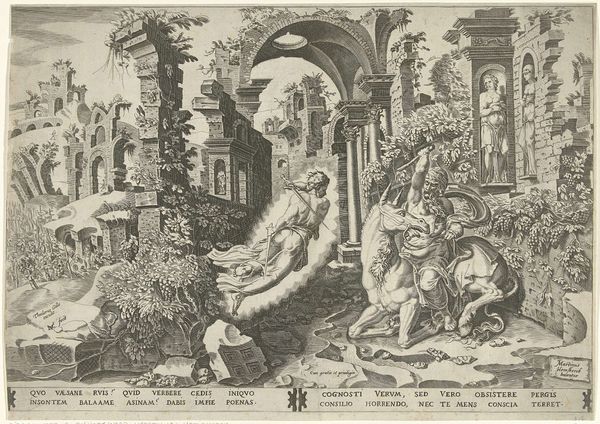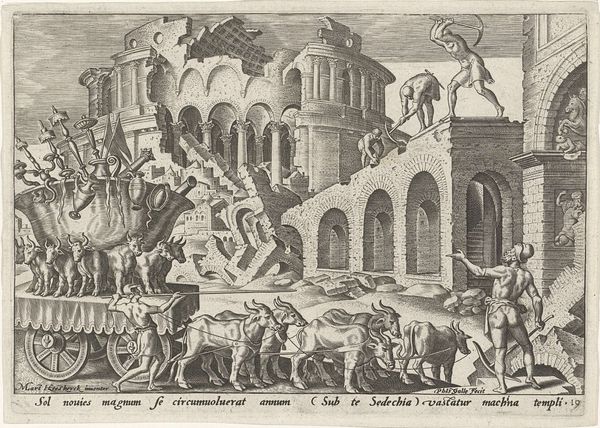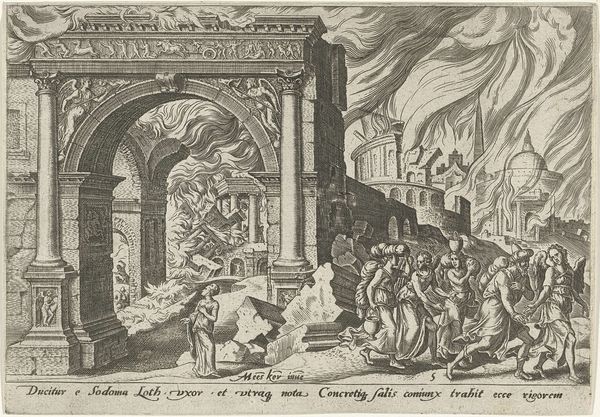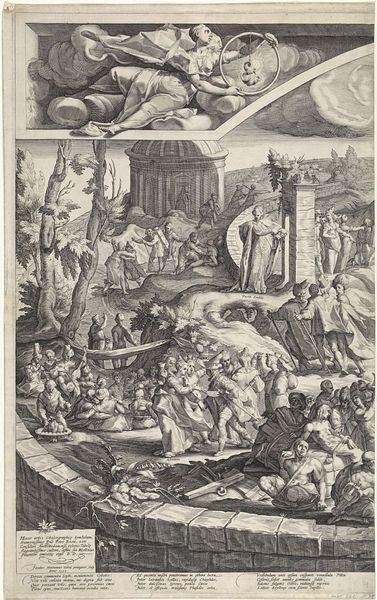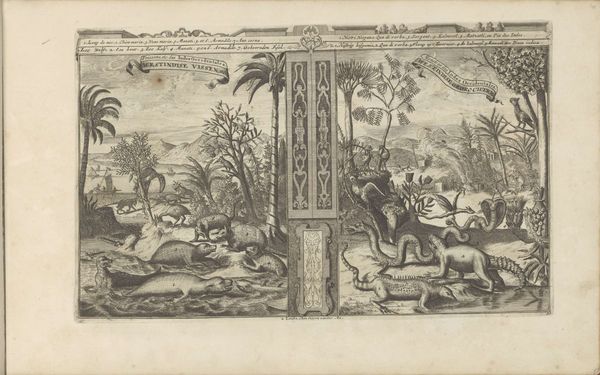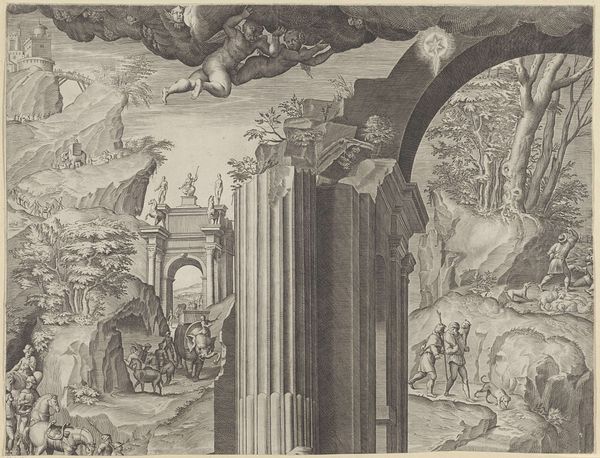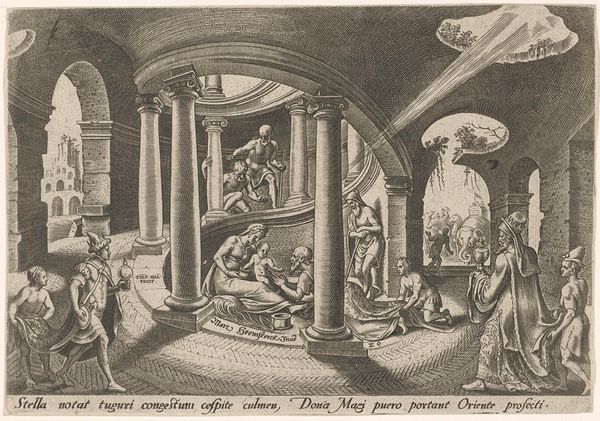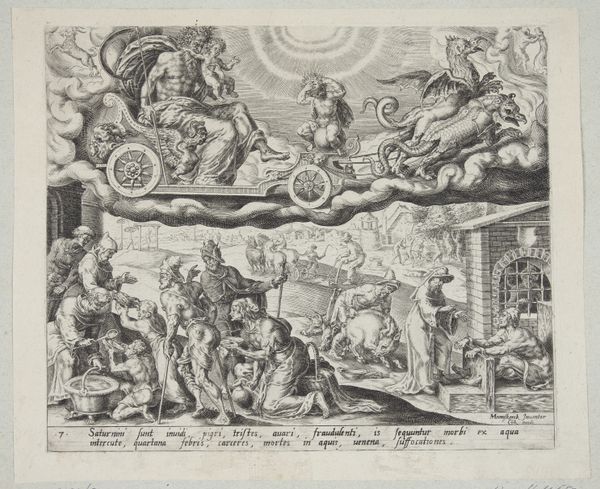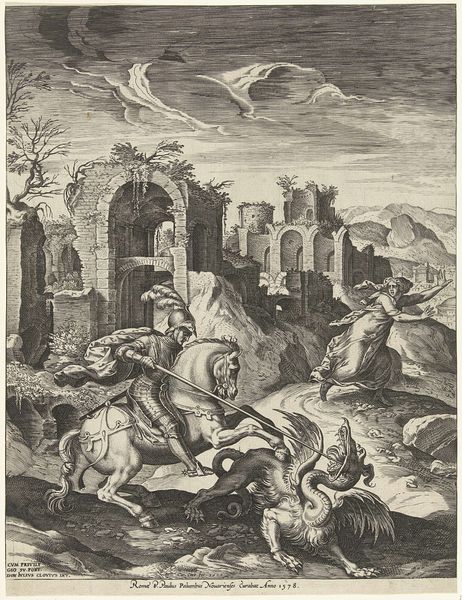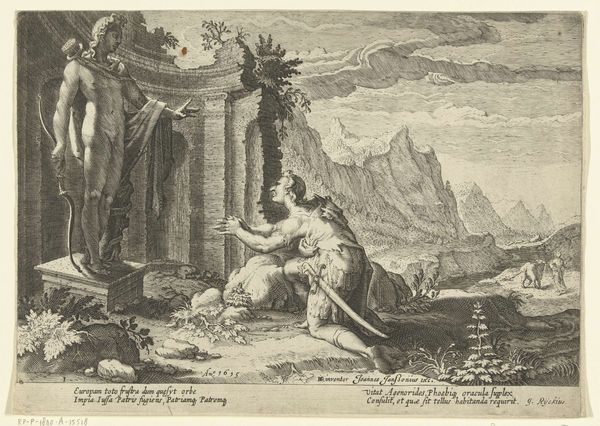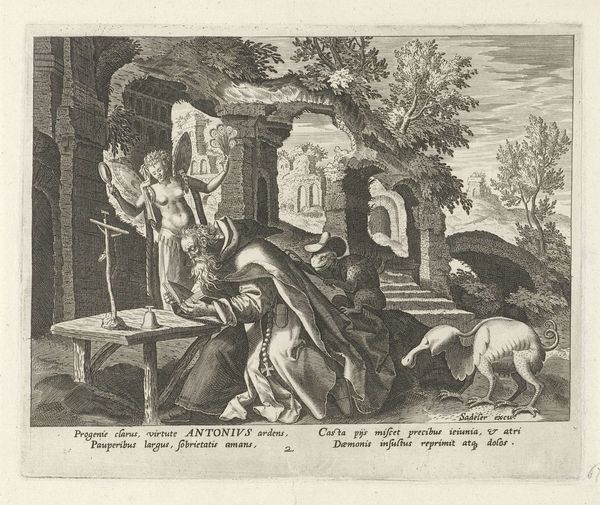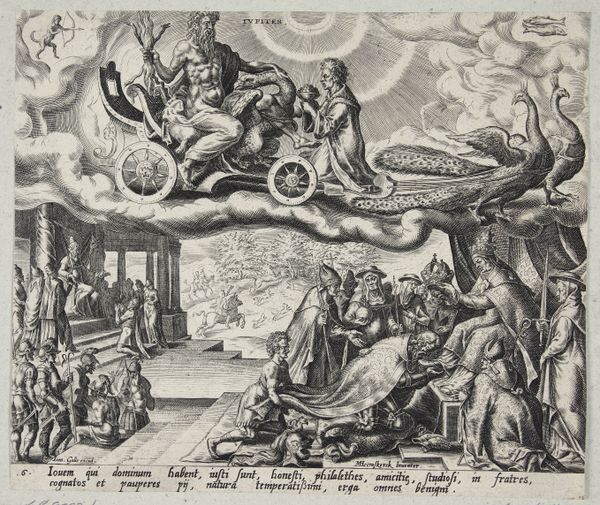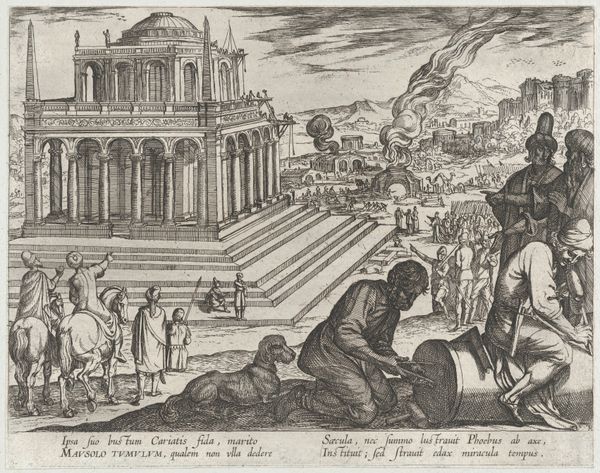
print, engraving
# print
#
old engraving style
#
landscape
#
mannerism
#
figuration
#
history-painting
#
engraving
Dimensions: height 139 mm, width 201 mm
Copyright: Rijks Museum: Open Domain
Editor: We're looking at "The Drunkenness of Noah" by Philips Galle, an engraving from 1569 currently held at the Rijksmuseum. The scene is chaotic and frankly a little disturbing. It feels theatrical almost, set against the backdrop of decaying classical architecture. What can you tell us about how this artwork engages with its historical moment? Curator: It's fascinating how Galle uses this biblical scene to engage with anxieties of his time. Notice how the classical ruins aren’t merely a backdrop, but rather speak to the decay of empires and, perhaps, of moral order. The engraving presents the viewer with both the grandeur of the past and the shame of the present. How do you think that contrast would resonate with a 16th-century audience? Editor: I suppose, amidst religious conflicts and social upheaval, it would serve as a cautionary tale about leadership and societal values. Was there a public debate on portraying biblical subjects like this at the time? Curator: Absolutely. The Reformation dramatically changed the public role of images. Depictions of biblical stories were no longer solely didactic tools of the church, but could be interpreted, debated, and even criticized. Galle's print is complex because it uses a historical scene to mirror contemporary debates around public versus private virtue. Notice how Ham's shaming of Noah is foregrounded, almost accusing the viewer to act like a bad actor in their life as well. Do you find the composition reinforces this sense of public shaming? Editor: Definitely. The theatrical staging, with its curtained backdrop and ruined stage, seems to invite us to judge Noah and Ham's actions. That’s interesting. It sounds like Galle is really using a biblical scene to make a statement on social morals. Curator: Precisely. Galle turns a biblical narrative into a political statement on the power of imagery itself and challenges his contemporary viewer. What does that challenge say about how images might influence behaviour? Editor: It seems the image functions almost as a public service announcement. The print encourages scrutiny and ultimately a certain moral standard. Thank you for opening my eyes to a wider perspective. Curator: The pleasure is mine. Seeing art as both reflection and critique offers valuable insight to anyone looking at an image today.
Comments
No comments
Be the first to comment and join the conversation on the ultimate creative platform.
